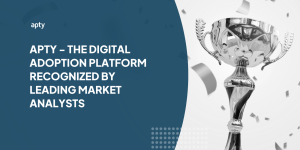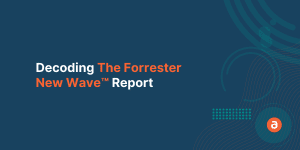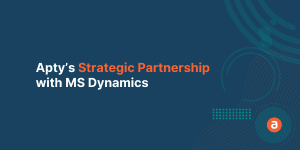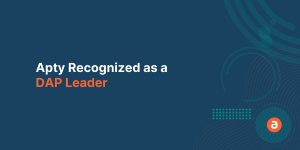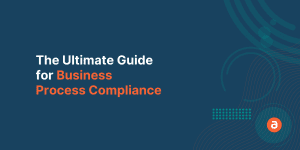Having a Change Management plan template is necessary to carry out change initiatives seamlessly at an organization. Change is a complicated process that is influenced by several factors. Having a well-defined change management plan template by your side can smoothen the process and unburden your management teams.
Change management plans must take into consideration, an organization’s processes, communication protocol, training method, and impact analysis, success metrics, and more. Having a well-designed template will organize all your ideas and will act as a log for all the decisions and discussions.
These templates or blueprints help you ensure that everything is in order despite the chaos that change typically causes. Each organization has different needs but the basic approach usually remains the same.
In this article, we will discuss factors you must consider while creating a template for your organization.
What is the Change Management Plan Template?
A change management plan template helps organizations manage the process effectively throughout the change lifecycle and act as a decision log to keep the efforts on track.
A good change management template must be iterative and must learn from the past and to improves the change process. It takes a disciplined approach to adhere to the template. Each template is unique and we will explore them all in this blog post.
5 Types of Change Management Plan Template
1. Change Management Stakeholder Plan Template
Identifying what the stakeholders will do and how they will participate during the change is key. This will help you to realize who will be your champion, advocate, driver, and participant.

Based on this, you will be able to categorize at what level each stakeholder will be engaged and plan accordingly.
Some crucial questions you will need to address are:
- What departments are impacted by the change process?
- Who is going to be the primary and secondary beneficiary of this effort?
- Who will support and who will drive the change?
- Who will be the Project Manager during the change process?
- At what stage of the change will a particular group of people take ownership?
- Who will be involved from the beginning to the end and why?
The answers to these questions will give you an overview of the people involved in the process and this insight will help you create a basic change Management stakeholder plan template. Categorize the information based on the following
- Type of participation
- Responsibility and job role
- Reason for participation
- Description of stakeholder
2. Change Management Communication Plan Template
People generally have a limited capacity to absorb information and since organizational change is a long process, communicating the goals and objectives behind your initiatives is crucial for your success. It is also important because, eventually, it will be your employees who are going to handle change and make it a success.

This change management communication plan template will help you overcome resistance to change and keep track of all the information that has been passed to the employees.
This is how you should design the communication template:
Type of meeting:- Decide whether the meeting will address a new topic or an update on an old one. Specify if it will be one-on-one, team-wide, or company-wide.
The topic of discussion:- Decide the topic of discussion and if it is related to people, business processes, or software
Purpose of meeting:- This helps stakeholders realize the importance of the meeting and acts as a reference point for future needs. The purpose of a meeting can be any of the following:
- A Dialogue specific to the aspect of change.
- A Vision for the future of change.
- A Review of the initial draft.
- Address issues associated with change and the effort required at each stage.
- Address modification in the current change process.
It is important to make the stakeholders realize the importance of the meeting and it acts as a reference point for future purposes.
- Type of Message:- Specifying the type and purpose of the message will give stakeholders an idea about the objective of the meeting.
- Who will communicate:- The plan must define the personnel involved in communicating change in each department. This speaker must be selected carefully based on their job role and impact on the team. For example, a change in the sales process should only be communicated by the Sales Manager and not by the project manager.
- Types of the audience:- Defining the target audience will help you to prepare accordingly for your audience and communicate exactly what is in it for them.
- Method of communication:- Today communication happens via multiple media. It would be ideal to use more than one method to reinforce communication. You can use video conferencing, in-person meetings, in-app announcements, emails, and team chat.
3. Change Management Analysis Template
Any organization needs a change management template for analysis to track change at each juncture, phase, and process. During the change cycle, a number of decisions are made based on the challenges encountered by the team.

Usually, a deviation from the designed plan takes place due to hurdles faced during the execution stage. All this affects the overall project scope which can be tackled if you have an analysis template.
Here are the points that an analysis template includes:
- Change Management Model:- Selecting a change management model can be challenging as you have to consider multiple factors before going with a particular one. Once you have decided on the model, you have to follow the principles of the selected model to analyze the change.
- Date of issue:- Note the date when you faced an issue as it helps you to keep a track of events. Let’s say if you face the same type of issue repeatedly, this template will help you to analyze how many times you have faced such issues and when was the first time you encountered it.
- Type of issue:- Once you log the date of the issue, it is time to note down the type of issue that you have faced. Once you fill this template you will be able to identify what type of issue is recurring.
- Type of Action:- This is the most important part of the whole process where you will mention the type of action taken either by you or the team to resolve the issue. If you face such problems in the future, it will be easy for you to find the solution even if the person who resolved it is no longer with the organization. Templates like these can become the subject for a case study within the organization and new hires can study it to learn about the challenges they might face and learn how to overcome it.
- Date of Resolution:- Mention the date when the issue was resolved. It will give you an idea of how long it took to solve the particular type of issue. If you encounter issues like these in the future, you can estimate the time to resolve them and can allocate resources efficiently.
- Takeaway:- Mention what you have learned in this process and what impact it had on the business.
4. Change Management Risk Assessment Template
The purpose of having a risk assessment template is to avoid issues before they happen. This way you can plan the risk mitigation strategy well in advance and be prepared throughout the change cycle.

How to create a Risk Assessment template:
- Categorize the risk:- It is ideal to mention the category of the risk to identify the type of issues that are arising. The risk categories could be Health and safety, compliance, technical, operational, strategic, financial, and safety, etc.
- Identify Severity:- Identify how serious the issue could be and mention whether to mitigate those risks or to completely avoid them. This will help you to create an action plan for the risks you may want to avoid.
- Create a detailed plan:- Mention the steps you have to take to avoid risk before the execution of a particular change phase.This will serve as a blueprint to help you prepare needed resources if things go bad.
- Responsibility:- Mention the person and department responsible for the plan.
5. Change Management Training Template

Your change management efforts can only be realized successfully if you plan your training program in line with your change initiatives.
Here’s how to prepare a training template that can withstand the change lifecycle and enable a smooth transition. Identify:
- What type of training:- Understand what training is essential for your employees and list them down before initiating change.
- People Involved:- Who will train the employees? Who will decide what they should learn? Who will benefit from it? Understanding this will help you communicate effectively and set the right expectation.
- Method of training:- Decide the format of the training content and the method that will be used to impart it. There are multiple ways of doing this such as videos, pdf, ppt, simulation, microlearning, and onscreen guidance. It is ideal to select more than one method. Each employee has their preferred way of learning.
- Requirement:- Check what type of change management tools, facility, and infrastructure is required to make your training efforts a success.
- Duration of training:- It is always better to know the amount of time required to train the employees as you can plan well in advance and can avoid any potential clashes upfront.
- Number of sessions:- Now that you know the duration of the training, divide that time into small sessions to make learning more effective. People often tend to forget if they are bombarded with a lot of information in one go. Segregating time for training will solve this.
Go Beyond Planning
Organizational change is no easy task but following the above-mentioned change management plan template will help make it easier.
You will need a tool to execute your change management plan. Digital Adoption Platform like Apty can provide impactful training with in-app guidance, communicate changes with in-app announcements, and analyze your training efforts successfully with the insight tool.

